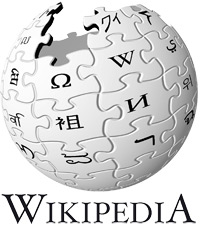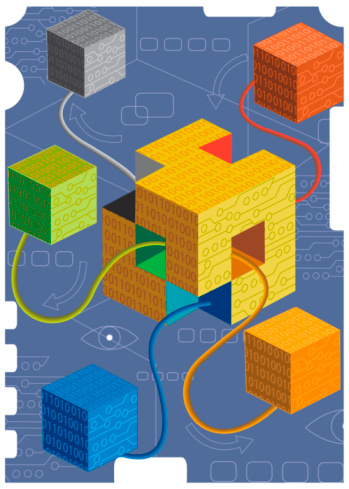OASIS Improvements over GDSII
- Squeeze out all wasted bits and redundant records.
- Support two-dimensional figure arrays
- Support vertical and horizontal trapezoid primitives
- Support step-and-repeat figure description
- Relax 16- and 32-bit integer restrictions
- Use variable-width integers (8-64 bits)
- Allow relative (Dx,Dy) coordinates in both step/repeat & figures
- Relax restrictions on string length, including cell names
- Relax restrictions on number of polygon vertices
- Use IEEE standard 64-bit floating point numbers
- Support layer name & purpose information
- Support arbitrary named properties, integer & floating values
- Support embedded comments
- Support Block-level compression
The latest news is that, as of December 2016, SEMI has updated SEMI P44 from SEMI P44-0316 to SEMI P44-1216. The update relaxes the coordinate space for the top cell from 32-bit to a 64-bit coordinate space. The latest version of the specification can be purchased through SEMI by clicking on the icon to the upper lest of this web page. Yotta has updated its P44 regression test cases to cover the latest P44-1216 specification.
About SEMI OASIS P39
OASIS® (Open Artwork Systems Interchange Standard) is the successor to the layout data format, GDSII. It is a standard (SEMI P39) administered and sold by the Standards and Trade organization, SEMI, San Jose, California. OASIS.MASK is a SEMI standard (SEMI P44) as well.
OASIS had been conceived as a design layout format that would drop the volume of GDSII data by at least 10X. When released in September 2002, implementations of the new format had achieved compaction and compression values 10-50X of GDSII. Other improvements over GDSII had been sought. Some have been listed to the right.
An all-volunteer team of people oversee and vote on proposed changes and additions to the new specification. Tom Grebinski (Yotta's founder) Chairs the Working Group. In July 2001, Mr. Grebinski, Kurt Wampler (world renowned computer scientist), Roger Sturgeon (the visionary behind GDSII) and Wes Erck (SEMI standards expert) had started the effort. September 2002 was its inaugural release. March 2004 was its first publish date by SEMI. Mr. Grebinski owns the registered trademark for OASIS®. To be involved, click on the above button to be added to the Working Group's e-mail list.
Here is the revision history.
. . . SEMI P39-0416 (Current)
. . . SEMI P39-0308
. . . SEMI P39-1105 (technical revision)
. . . SEMI P39-0304E2 (editorial revision)
. . . SEMI P39-0304E (editorial revision)
. . . SEMI P39-0304 (first published)
About SEMI OASIS.MASK P44
SEMI OASIS P44 is an application-specific data format that makes strict use of the data constructs and record types specified by the SEMI OASIS P39 format. It, however, may not produce the same results if read by an OASIS P39 reader. This mismatch occurs, only, while the P44 file is localized. This occurs because of a P44-localization requirement that all modal variables be reset with each new localized area that has been specified within the top cell.
The format is particularly suited for the optimal writing of OASIS data to a photomask. The Working Group responsible for its updates is working on expanding the use-model for this format.
An all-volunteer team of people oversee and vote on proposed changes and additions to the P44 specification. In 2015, the team from SEMI Japan was integrated into the OASIS P39 Working Group team.
The revision history for OASIS.MASK is:
. . . SEMI P44-1216 (Current)
. . . SEMI P44-0316 (technical revision)
. . . SEMI P44-0211 (technical revision)
. . . SEMI P44-0709 (technical revision)
. . . SEMI P44-0708 (technical revision)
. . . SEMI P44-1105 (first published)
ABOUT OASIS SEMI P39 AND OASIS.MASK SEMI P44
Purchase from SEMI
SEMI OASIS P39
About OASIS P39
Library Release
Layout Integration
RTL / Logic
Floor Planning
Tapeout / Mask Data Prep
"The Company's technology established a common expectation amongst suppliers and customers regarding matters of OASIS compliance, performance and interoperability"
Naoya Hayashi
Electronic Device Laboratory
Dai Nippon Printing Co., Ltd
3rd Party IP / Fabless / System OEM
Foundry / IDM Factory
Verilog
VHDL
Liberty
Liberty
LEF
GDSII
OASIS
Structured NetList
DEF
Structured NetList
SDK
SDK (e.g.)
SPICE
Design Rule Deck
Circuit Extraction Parameters
Control Files
OASIS
GDSII
SDK
Library Development
OASIS
OASIS.MASK
GDSII
Add me to the OASIS Working Group mailing list.
Purchase from SEMI
SEMI OASIS.MASK P44
The diagram above shows the insertion points (in red text) for OASIS. EDA, Wafer and Mask tools read and write OASIS data. Foundries, IDMs, Fabless, 3rd Party IP suppliers use OASIS technology for internal tool development and compliance verification.
 | ||||
typedef struct _oasisReaderPath {
oasisUInt layer,dataType,halfWidth;
oasisInt startExt,endExt;
rawPointList *ptList;
oasisPropertyList *propList;
} oasisReaderPath;
OASIS is far more complex in its implementation than GDSII. It takes about 140,000 lines of C++ code for OASIS and about 6,000 lines of code for GDSII.
OAS = OASIS
GDS = GDSII
Workflow Auditor Point Tools
TM
®
®
© Getty Images
NEW at Yotta Data Sciences
* US Patents 9,122,825, 8,555,219, 8,266,571 and 7,685,545.
International Patents: China 200980129771.8, Japan 4768896, Korea 10-1580258, Israel 209907, European Patent 2310967.
OASIS® is a Registered Trademark of Thomas Grebinski
© 2008-2024 Yotta Data Sciences, Inc. All rights reserved.
February 16, 2024- Yotta is offering, to qualified partners, a six-month evaluation-period, with support, for its SEMI P39-0416 OASIS Reader/Writer Source Code.
Visit Page: OAS Reader/Writer
Visit Page: OAS Source Code





